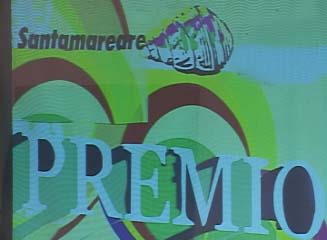A view from outside allows us to celebrate: the natural resource potential of the region that Cristobal Colon extolled on his trip here is remarkable and displayed solely in the Cuban archipelago and the Caribbean islands, to the point that some scientists continue talking about a virgin nature.
This the heavy rainfalls and the most valued forest reserve of the country contribute, the benefit to the land of 29 rivers of crystalline water in most of their course, the transparency of the oceans with 14 kilometers of ocean beach and sands of coral and pluvial origin, as well as the tibaracons and the geography in general.
On the opposite side, some human actions and the city infrastructure are beginning to create serious worries.
A numbing twist
Baracoa’s environment is changing over the years. Together with the adverse weather conditions and their effects, the god Cronos makes his own and the transformations of man in the city are perceived as a balance of benefits and impairments.
Along with new buildings for the development, old problems persist, such as pollution caused by solid and liquid waste arising from households, or promoted by individuals who throw garbage and objects of any kind in makeshift dumps.
“Faced with that, we do not have the best solution,” the director of the Community Budgeted Company in the municipality, Leudis Legrá, has said several times, referring to the lack of transportation for a regular collection of garbage that sometimes assaults the view and smell of people, besides the danger to health.
On top of that, the waste treatment systems pose a more serious problem. Their obsolescence, lack of maintenance and repair are far from responding to the functionality foreseen in the original designs and are targets of criticism.
Contaminated waters
The environmental challenges in the First City of Cuba are enhanced by the lack of sewers. In the Historic Urban Center waste is treated with so-called open cesspits, built over half a century ago and are now blocked off.
Neither are surpluses of many homes and institutions built after the Revolution of 1959 processed efficiently. This is the case of housing in the Reforma Urbana and Van Van, neighborhoods in the city, and those located on the outskirts of Mabujabo and Jobo Dulce, as well as a coconut oil extraction factory.
The situation of the limited or non processing of solid waste, with the absence of septic and moura tanks where they should be, also pollutes the rivers. The Macaguanigua River, recipient of waste direct from three deliveries and homes adjacent to a long street, pollutes the bay of the city. Similarly the Joa River, an affluent of the Miel River, stains the water that flows onto the Caribbean beach.
Unfortunately, the population is suffering from skin diseases, especially scabies, caused by bathing in or with contaminated water, and is often registered in polyclinic and family doctors’s offices.
The glass of the beholder
In the environmental field Baracoa is not just concerned with the negative, stated the CITMA delegate in the municipality, who in turn highlights the future actions under the municipal environmental strategy, now also prompted by the commemoration of the half millennium of the First Town of Cuba.
The basic objective is to make the people achieve good conservation practices. This explains why it has prioritized the revival of the Cacique Guama Zoo, a key institution for the environmental education of visitors.
 The task of workers in the Cueva del Paraiso Archaeological Museum, which promotes the protection of nature in the surrounding community is significant, and also in the distant 30th Aniversary Popular Council, where there are important archaeological trails which the residents of Boca de Miel are being asked and taught to care for.
The task of workers in the Cueva del Paraiso Archaeological Museum, which promotes the protection of nature in the surrounding community is significant, and also in the distant 30th Aniversary Popular Council, where there are important archaeological trails which the residents of Boca de Miel are being asked and taught to care for.
Other practices are encouraging the gradual reforestation of riverbanks and correction of gullies or mitigation of erosion by running water which specialists and workers of the Environmental Services Unit Budget are planning, specifically in areas of the Alejandro de Humboldt National Park
Mangrove planting and the construction of forest and medicinal nurseries in the mountains should be added. In a judgmental way, Suarez concludes: “It is not everything we want, nor do we have the resources that environmental protection demands. At the moment, we have an efficient program so that Baracoa makes sustainable use of the natural resources. ”
Translated by: Daysi Olano


